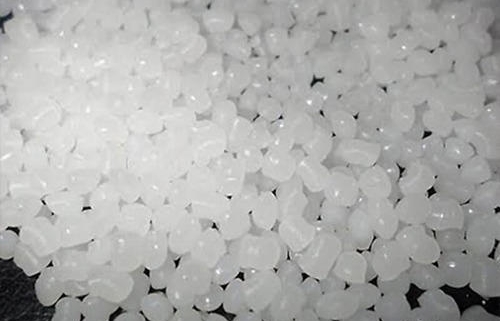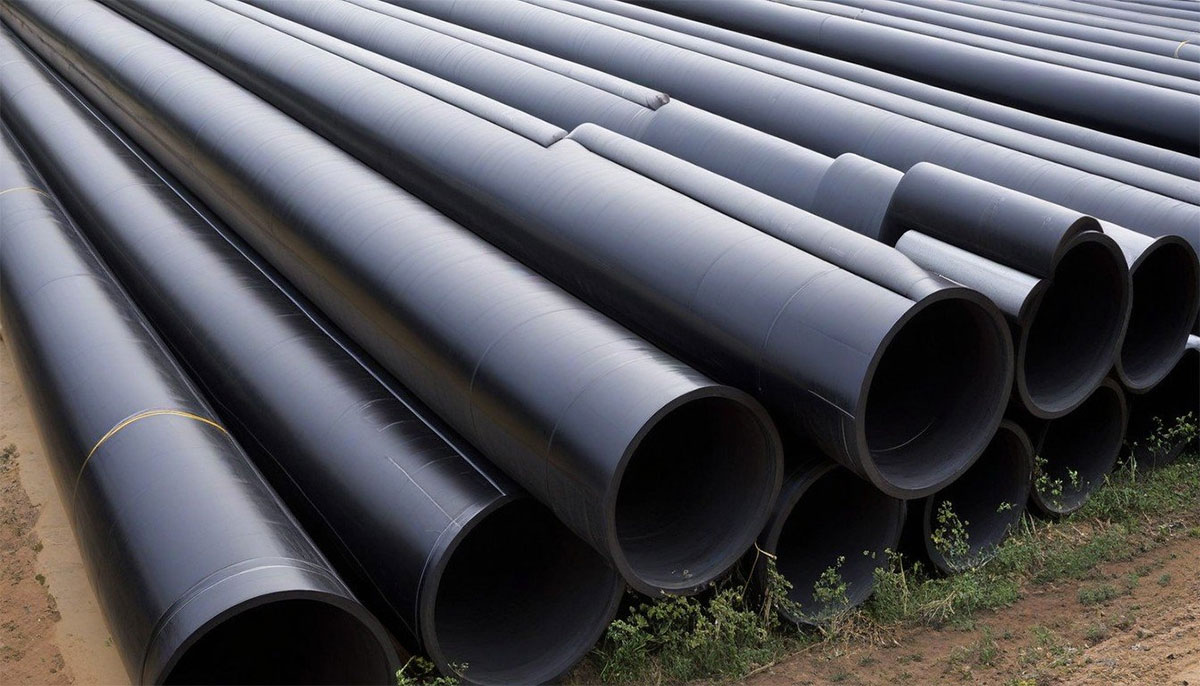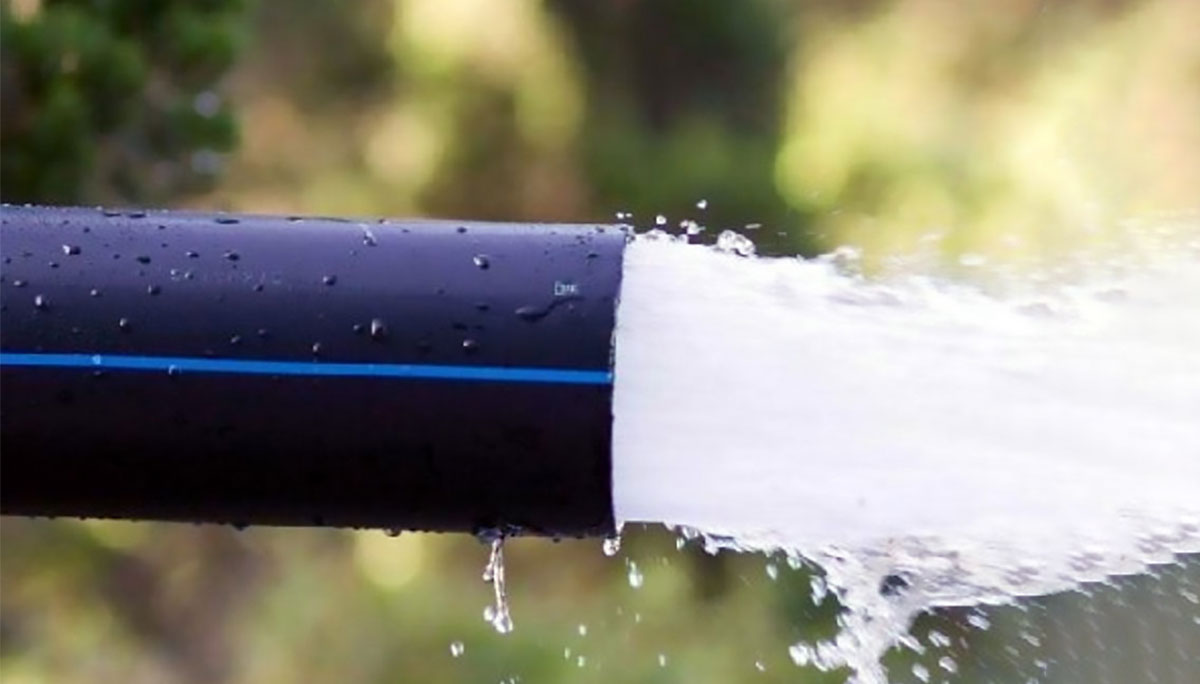
What features make polyethylene special?
When employers and contractors are looking to choose a strong, reliable and economical pipe for their projects, polyethylene is their first choice. Single-wall polyethylene pipes are a cost-effective solution for a wide range of piping applications, including natural gas distribution, municipal water and sewage, industries, marine, mining, landfill, power and telecommunication facilities.
Also, these pipes are efficient for aerial, underground, surface, floating and marine facilities. According to Mr. “Wilabi” from P.O.E. One of the main reasons for the growth of the use of plastic pipes is the saving of installation costs, the supply of workers and the necessary equipment compared to the old common pipes. If you add the potential of having lower maintenance costs and longer useful life to these things, we will understand the reason for the intense competition of polyethylene pipes in the world markets.
The use in natural gas distribution is one of the first applications of semi-dense polyethylene (MDPE) pipes. Today, 95% of natural gas transmission pipes under 12 inches installed in America and Canada are polyethylene pipes. Polyethylene is considered as the first choice in terms of industrial pipes all over the world.
After 50 years of continuous use of polyethylene pipes in the transfer of drinking water, this type has managed to receive international approvals and growth in urban use. Polyethylene pipes are quality controlled according to NSF, AWWA and ASTM standards.
Now we will explain what makes pipes made of polyethylene special.
- High life cycle: Urban use of polyethylene pipes has very low life cycle costs. The completely smooth inner surface of polyethylene pipes preserves the special flow properties and heat welding eliminates leaks. It has been proven that these items are a successful combination to reduce the operating costs of the system.
- Leak-free and fully restrained connections: Polyethylene connection using heat welding creates leak-free connections that are as strong as pipes or even stronger. The use of welding in urban applications eliminates possible leakage points that are present in other types of pipes such as PVC or iron pipes due to the use of male-female connections every 10 to 20 feet.. in all these connections. Male-female rubber gaskets are used, which wear out over time and may leak, that’s why the “acceptable water leakage rate” in them is 10% or more, but this amount is in poly pipes. Ethylene is relatively zero due to the possibility of using welding. plus boiling points
Polyethylene corrodes have a self-retaining property that, while maintaining the integrity of the connections, eliminates the need for shock absorbers expensive or shock absorbing blocks. Despite the advantages that the butt welding connection method has, engineers have ways others use it to connect polyethylene pipes, which include electrofusion and mechanical connections.
In electrofusion joints, pipes or joints are connected to each other using an electric heater embedded in them. Sometimes mechanical connections are needed to connect the pipe to other parts such as valves or other devices. For such purposes, special connections have been created that are abundantly available to meet most practical needs. - Corrosion and resistance to chemicals: polyethylene pipes are safe from rusting, rotting and punctures. They also do not cause the growth of living organisms inside or outside the tube. Polyethylene pipe has great chemical resistance. Although polyethylene pipes are not affected by natural soil that is chemically active, but like any other pipe, if the soil is contaminated with organic solvents (such as oil and diesel), there may be a need for installation methods that use polyethylene pipes. Protect against contact with organic solvent. Of course, protection against solvent penetration is necessary even in metal pipes and other types of pipes that are connected to each other using washers. Generally, for all piping systems that are in contaminated soil. are installed, during installation, it is necessary to use safety solutions that guarantee the quality of the fluid to be transferred.
- Flexibility and resistance to fatigue: polyethylene pipes at the installation site can finally bend up to a radius of about 30 times their nominal diameter, which can be less depending on the thickness of the pipe wall. For example, a 12-inch polyethylene pipe can deform up to a radius of 32 feet in the cold state. This issue eliminates many connections that are used for angular changes in the piping system and also facilitates installation. Polyethylene has exceptional resistance to fatigue and under the highest operating pressure, it can withstand several pressure fluctuations up to 100 % to maintain its maximum working pressure without any negative effects on long-term functional capabilities.
- Seismic resistance-toughness, flexibility of polyethylene pipes along with its other special properties, such as leak-free and completely restrained joints resulting from welding, have made it suitable for installation in active soil environments and places exposed to earthquakes.
- Structural Advantages: Properties such as light weight, flexibility, and fully insulated, leak-free joints combine to provide cost-effective and unique installation methods not possible with other materials. In many facilities, installation methods such as horizontal directional drilling, pipe renewal using blasting of old slipline drilling and placement, and semi-floating or floating pipe installation can significantly facilitate construction. and save considerable time and money. It is easier to install polyethylene piping systems with a weight of about one-eighth of steel pipes of the same size and using integrated leak-free connections compatible with different working conditions and does not require heavy lifting equipment. Polyethylene pipes are produced in standard sizes of 50 feet or more and are wrapped in large coils in diameters of 6 inches and more. In some special diameters, coils with a length of more than 1000 meters are available. Polyethylene pipes withstand impact – especially in cold weather conditions where other pipes may crack and break – much better than PVC pipes. Since butt-welded polyethylene joints are as strong as pipes, they can be connected on the ground in very long lengths and then placed directly in the trench or by using directional drilling along the way. He dug a well or used it in the process of rebuilding pipe 4. It should be noted that the conditions of the construction site have a significant effect on the choice of installation method.
- Durability: Polyethylene pipe installations are economical and less expensive in the long run due to the physical properties of the pipe, leak-free connections and reduced maintenance costs. Polyethylene pipe industries, the useful life of these pipes is estimated between 50 and 100 years on average, provided that the piping system is designed and installed correctly and is used according to published industrial samples and the suggestions of the pipe manufacturer. they hit This durability and long life will save the cost of replacing these pipes. In properly designed and installed polyethylene pipe systems, there is little need for continuous maintenance. Polyethylene pipe is resistant to most common chemicals and is not susceptible to the risk of galvanic corrosion or electrolysis.
- Hydraulic efficiency: since the inner surface of the polyethylene pipe is free of any roughness, these pipes are placed in the category of smooth pipes, the group that creates the least resistance to fluid flow.
- Resistance to temperature: the common temperature range of polyethylene pipes in high-pressure working conditions is 0 to 140 degrees Fahrenheit. But for low-pressure working conditions and some special applications, this material can withstand much lower temperatures than many polyethylene resins used in polyethylene pipes, not only at the standard temperature of 73 degrees Fahrenheit, but They have been subjected to stress test at higher temperatures such as 140 degrees Fahrenheit. Generally, polyethylene pipes retain their strength more than other thermoplastic materials such as PVC at high temperatures. Polyethylene materials retain approximately 50% of their strength at 73°F at 140°F, while PVC at 140°F loses nearly 80% of its strength at 73°F. As a result, polyethylene pipes can be used in many plumbing applications in a wide range of temperature changes.
- Toughness: Toughness is the ability to change the shape of a material under the influence of stress, without breaking or eventually breaking. Also, sometimes the ability to increase strain 2 (length increase) is interpreted as toughness, and this is one of the important characteristics of polyethylene pipes, both when used above ground and underground. For example, as a result of loading from the ground surface, the polyethylene pipe buried in the soil changes its shape and its circular cross-section changes to an oval, and its vertical diameter decreases and its horizontal diameter increases slightly. The increase in the horizontal diameter causes the soil wall to press the width of the pipe, this pressure prevents further deformation of the pipe and ultimately leads to the stability of the pipe. This problem finally provides the formation of the soil-pipe structure and gives the ability to withstand ground vertical loads or other vertical loads to the concrete materials. These loads can cause the failure of stronger pipes but with lower strain capability. Corrosive materials such as polyethylene, which are used in water, natural gas, and industrial pipelines, can increase local stresses resulting from improper installation, where boulders, rubble, or tree stumps may should be in a position to press the outer surface of the pipe, bear it safely. There are many other construction conditions that may lead to effects similar to the above, for example, bending of the pipe exceeding the allowable strain, insufficient reinforcement of the pipe, unsuccessful alignment of the pipe to connect to rigid structures, etc. There is more localized deformation without causing irreversible damage such as cracking. In fact, the local deformation causes considerable local stress distribution and loss, without any harmful effect on the pipe. As a result, in general, the structural design of materials that act in the buckling state can be done based on the average stress, and this fact greatly facilitates the design protocol.
Viscoelastic property: Polyethylene pipe is a material with viscoelastic structure. Due to its molecular nature, polyethylene has a complex combination of fluid and elastic behavior. As a result, this material shows properties between metal crystals and very viscous (slow flowing) fluids.
The viscoelastic nature of polyethylene has led to two engineering properties that are used in the design of polyethylene water piping systems: creep and stress damping.
Creep is a component of deformation that is defined as a time-dependent viscous flow component. crawl to the response of polyethylene to a constant load over time is also interpreted. When polyethylene is subjected to a constant load,
It immediately undergoes a deformation that can be predicted by the elastic modulus from the tensile stress-strain curve Is. In addition to this instantaneous deformation, the material continues to deform at high loads at a slower rate, and if the load
If the size is large enough, the material may be packed or broken.
Stress damping is another unique feature that is the result of the viscoelastic nature of polyethylene. When polyethylene It is subjected to a constant strain, a deformation to a certain extent that is maintained for a period of time, a load or stress caused by Deformation occurs, slowly diminishing over time, but never completely eliminated. This damping Stress in response to load is very important in the design of polyethylene pipe systems. This is the answer that causes
The stress is reduced in sections of the pipe that are subjected to constant strain.
Polyethylene, a material with high performance characteristics
One of the most important properties of polyethylene is being non-conductive against electricity, which makes it work properly in various conditions. These pipes are safe from electrochemical corrosion processes caused by electrolytes such as salts, acids and bases. In addition, polyethylene pipes are not vulnerable to microbial attacks and their smooth and non-sticky inner surface has a low friction factor.
Another unique functional advantage of polyethylene pipes is high flexibility. This feature makes the installation process easier because it allows the ability to make angular changes using the least number of connections. Also, flexibility gives long pipes with a maximum diameter of 6 inches, the ability to be coiled. Another unique functional property of polyethylene pipes is strainability, which indicates the ability to change shape without breaking. A buried polyethylene pipe, in response to the load applied to it from the ground surface, can safely tilt and use the surrounding soil as support. That is, if the polyethylene pipe is installed correctly, it can withstand the pressure from the soil and the load from the living organisms on the surface, while the same amount of load can be carried in pipes that are much stronger, but due to small deformations. They crack and break, causing failure. Also, practical tests have proven that the high strainability of polyethylene pipes has made them very resistant to vibration.
Using heat welding processes, polyethylene pipes and joints can be made leakproof and completely insulated, which are as strong as the pipe itself. The combination of these advantages makes polyethylene pipes preferable for certain applications such as horizontal directional drilling, old pipe bursting and discharge outlets to the sea.
Polyethylene pipes maintain their toughness even at low temperatures.
In addition, polyethylene pipes have a very high resistance to fatigue and are very resistant to different and successively applied forces.
Despite the mentioned advantages and other advantages of polyethylene pipes, their correct design and use requires sufficient knowledge of their more complex stress-strain and stress-fracture behaviors. Polyethylene pipes do not work based on the simple proportionality between stress and strain of Hooke’s law, which is a characteristic of metal pipes, but their ability to resist failure decreases with the increase of load bearing time. In addition to these characteristics and other mechanical properties, they are more sensitive to temperature and some special environments. In addition, the mechanical responses of the polyethylene pipe can be different depending on the polyethylene raw material from which the pipe is made. This issue is mostly dependent on the nature of polyethylene polymer, is molecular weight, molecular weight distribution, degree of density branching, and also to some extent on the type and amount of additives used in the composition of the pipe. The behavior of a specific polyethylene pipe that is chosen for a specific application should be proportional to the design and performance.




